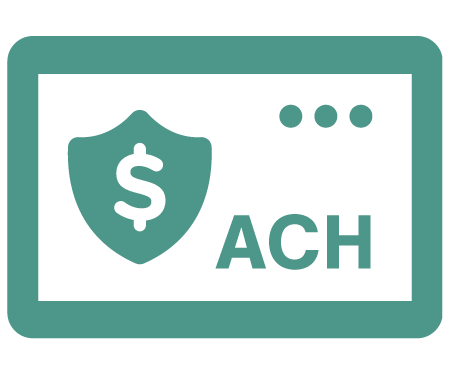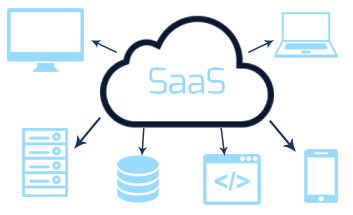Software as a Service (SaaS) applications payment needs typically need a shopping cart / payment checkout or the ability to manage recurring or subscription payments. Both present challenges and opportunities for the SaaS platform but our focus will be on the recurring payment functionality.
SaaS application users who have a recurring payment or use a subscription-based model need to manage future recurring payments. Because PCI compliance regulations place strict controls on the handling and storage of full credit card data these recurring payments must manage the compliance. This is most commonly handled using payment tokens.
The SaaS application provider needs to consider how the end user views the payment processing experience. When it comes to recurring billing, collecting expected and relied upon income stream is crucial.
Maximizing Payment Collect Rates
 Maximizing credit card approvals and offering an ACH processing option can both lead to a healthier bottom line. For recurring billers, the ACH payment vehicle minimizes processing fees, which is important to the end user. The SaaS application provider that optimizes these areas has a competitive advantage.
Maximizing credit card approvals and offering an ACH processing option can both lead to a healthier bottom line. For recurring billers, the ACH payment vehicle minimizes processing fees, which is important to the end user. The SaaS application provider that optimizes these areas has a competitive advantage.
Maximizing credit card approvals by reducing card decline rates minimizes the workload in acquiring new card data from expired or replaced cards.
Although the e-commerce application user cares about processing fees, he is certainly not as price sensitive. He also wants a simple way to accept payments. Applying for a merchant account and waiting 2-3 days can be enough of a hassle to prompt him to look at other merchant account options. In addition, the potential for generating significant revenue from processing fees is reduced significantly because of the typically lower processing volume.
Become a Payment Aggregator?
For most e-commerce | checkout applications, using a payment aggregator such as Stripe or PayPal is often the best overall fit. Quick and elegant integration, fast and easy client onboarding, as well as offloading both PCI and payment support burdens make this an easy choice.
Grab Your Free Ebook “Explode SaaS Revenue by 84%”
When should the SaaS e-commerce provider look at other options and what are they?
 If your SaaS application has many users it may make sense to bring payments in-house or seek a partnership. By leveraging payment aggregation, or possibly hybrid payment aggregation, you can still enroll users on the fly but you generate revenue on every sale.
If your SaaS application has many users it may make sense to bring payments in-house or seek a partnership. By leveraging payment aggregation, or possibly hybrid payment aggregation, you can still enroll users on the fly but you generate revenue on every sale.
As an illustration, if you were to become a true payment aggregator, your cost to process a payment may average 2.4 percent and 8 cents. If you are charging a common 2.9 percent and 30 cents per transaction, the margin is yours.
Consider having 1,000 users processing 20 transactions per month at $50 per transaction. That’s $1,000,000 processed and 20,000 transactions. Potential revenue = $9,400 per month. Sounds good, right?
Not so fast.
Payment aggregation involves upfront development time and integration, plus compliance and legal costs. You will also need ongoing risk mitigation and operation personnel. All of these create costs. It would not be uncommon to pay $100,000 to get started and another $100,000 per year in various costs.
So this becomes a business decision. Do you have the requisite volume, staff and risk mitigation tolerance? Run the numbers and seek some guidance.
Hybrid model
There is also hybrid payment aggregation. With this model, much of the initial and ongoing costs are mitigated by the aggregation partner. Your involvement, expense, and risk exposure are therefore greatly reduced.
As you might expect, there is an associated cost. Typically, your payment costs are increased. 2.9 percent tends to be standard with volume considerations given. Of course, this means you must charge more and you need to consider whether or not your client base will be OK with that. If you charge 3.25 percent you again have margin.
Both of these options are typically only in play with a significant user base (or perceived potential to get to one) plus the operational bandwidth for ongoing maintenance.
In the hybrid aggregation model, you partner with a Third-Party Payment Processor (TPP). Your application users have to apply for processing for their merchant account. Typically they are approved quickly — in some cases instantly, and in others, 24-48 hours. The application process can be white-labeled, allowing the SaaS application to present the payment processing within their site or mobile app. Credentials can be pushed to the SaaS application and users can process payments.
This scenario offers multiple benefits:
- No-risk exposure
- Reduced PCI scope and compliance
- Reduced support burdens
- Potential for greater revenue share
Payment Processing Partnership
Another viable option, especially for businesses that do not want risk exposure, is that of a Payment Processing Partnership.
In this model your business partners with a TPP. The SaaS platform hands off the merchant account application, provisioning, support and risk mitigation to the TPP.
The Saas platform receives a revenue share from all their client’s payments. Many times the revenue share can be higher than aggregation.
Making the best decision for your business can be difficult. SaaS Platforms that offer recurring billing can also drive new residual revenue streams with payment integration. Deciding on the best fit for your business is typically best done by having a conversation with a payments provider that has experience with low-friction adoption practices in PaaS/SaaS payments integration.
For a no-obligation call, complete the form below or schedule a time here.
For additional information, download our WhitePaper:
{{cta(‘d7a1dab6-263a-42dd-b1a9-36af83fef04a’,’justifycenter’)}}





